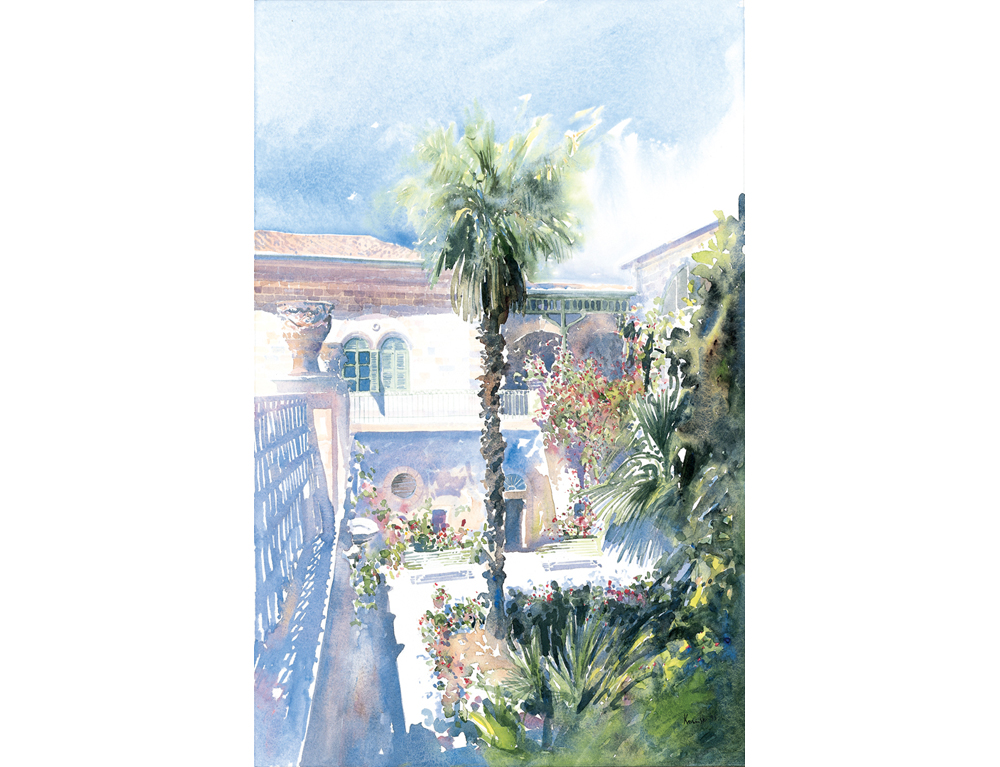AMERICAN COLONY, JERUSALEM
The term "American Colony" can conjure many different thoughts to different people in many locations. Historically, in Jerusalem, it will refer at one time to a group of Americans, under the leadership of Horatio Spafford who started a humanitarian work which continues to this day in a building, known as Spafford House, located at an elevated section of the Old City, abutting the northern walls between Herod's Gate and Damascus Gate. The vista from the roof of this building commands a spectacular panorama across Jerusalem, even as far as the Dead Sea and the Mountains of Moab.
The 19th century will have been a very beautiful time to visit Jerusalem, with few buildings existing outside the old city walls. it was also a time when Christians used to read the Bible more earnestly than appears today, and the city attracted interest from all over the world. Artists would visit, accompanying exploratory societies performing archaeological digs, David Roberts and other Orientalist illustrators come to mind, and many political interests became involved in what was going to be a hotly debated theater of world affairs. After all, we are dealing with Jerusalem, translated "City of Peace" and referred to by Jesus as the "City of the Great King".
Much evidence of historic activity is readily available. Older architectural forms using load-bearing hand dressed stonework are really quite beautiful, expressing styles that have been local expressions mixed with imported variations. Everyone seemed to be trying to carve out their own "Our Jerusalem". The above are two obvious examples painted by George Kosinski. Interestingly, both were designed and built in the mid-19th century by German missionary Frederick Vester Sr. future father-in-law of Bertha Spafford Vestor. He was also responsible for buildings in the German colony on the south side of Jerusalem in Emek Rephaiim, the Valley of the Ghosts. The extra third level of the consulate was added in the mid 20th century, but you can see the likeness between the first two levels and the Colony Courtyard.
The mid-19th century was still the Romantic period which was also expressed architecturally, soon to be lost to 20th century innovation where construction and earth movement was becoming brutally mechanized and industrialized. Alas, this appears to be a universal problem as humanity seeks to be dominated by modernity.

